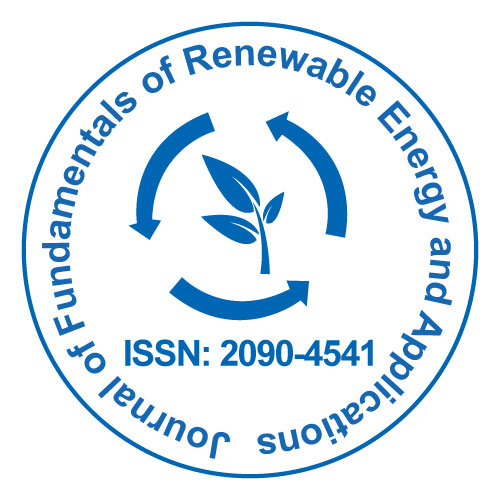
Tagebuch des fondamentaux de l'énergie renouvelable et des applications
Libre accès
ISSN: 2090-4541

ISSN: 2090-4541
Aragon-Aguilar Alfonso, Izquierdo-Montalvo Georgina, López-Blanco Siomara et Gomez-Mendoza Rafael
Le Mexique est riche en sources d'énergie renouvelables (solaire, éolien, biomasse, hydroélectricité et géothermie). Néanmoins, le potentiel de ce type d'énergie n'a pas été pleinement exploité. L'énergie géothermique du pays est l'une des énergies renouvelables utilisées pour la production d'électricité, bien que l'hydroélectricité soit l'une des sources d'énergie renouvelables avec la plus grande capacité installée. Le Mexique se classe au quatrième rang mondial en termes de capacité électrique installée à partir de ressources géothermiques. Dans ce travail, une méthodologie d'évaluation de la chaleur stockée dans la zone centre-est du champ géothermique de Los Humeros est présentée. Les puits regroupés dans cette section du champ sont non producteurs, mais dans la zone voisine (centre-ouest) sont producteurs. Nous présentons une analyse qui montre une évolution des puits producteurs de deux phases vers une phase unique (vapeur) dans sa masse produite. La distribution des températures dans cette zone centrale a été déterminée en utilisant des données de puits producteurs et non producteurs. De plus, en utilisant des surfaces isothermes et en établissant des limites de température de 200, 250 et 300°C, des épaisseurs nettes ont été déterminées dans chaque puits avec possibilité de stockage de chaleur. Français La contribution innovante de ce travail est centrée sur le sauvetage des puits non producteurs à haute température mais à faible perméabilité et à faible recharge. En considérant différents scénarios de propriétés du réservoir dans la zone étudiée, la chaleur stockée a été déterminée et son évaluation correspondante pour l'obtention d'une production électrique. Dans les déterminations, des valeurs de chaleur spécifique (cT) entre 1500 et 2900 [kJ/(m3°C)] et la température du réservoir, 200°C < (TR) < 300°C, ont été utilisées. Les résultats obtenus sont exprimés en MWTh et montrent la faisabilité d'étendre la méthodologie à d'autres champs similaires. Grâce à la variation du facteur d'extraction entre 0,01 et 0,05 et à des conversions d'efficacité de 0,10 et 0,25, l'énergie en MWTh a été déterminée. Les résultats de la méthodologie sont utiles pour prendre des décisions sur la faisabilité d'un projet d'extraction de chaleur pour son exploitation commerciale.